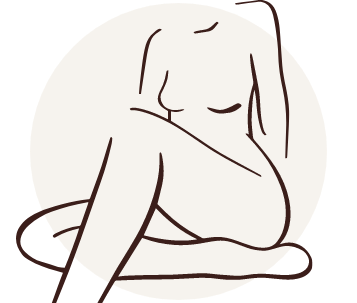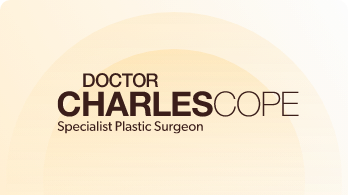A thigh lift (thighplasty) removes excess skin and fatty bulges on the inner or outer part of the thigh. Dr Cope often combines thigh lift (thighplasty) with liposuction to achieve better results. This provides an improvement in thigh contour and reduces discomfort from chaffing of the inner thighs.
The incision is usually hidden in the groin crease for the medial (inner) thigh lift (thighplasty), and under the underpants for the lateral (outer) thigh lift (thighplasty) . If there is a lot of excess skin, then an incision along the inner part of the thigh may also be necessary.
*The surgery involves a general anaesthetic, with a 2-3 day stay in hospital.

*Most patients can resume work and daily activities 2-3 weeks after the surgery. To reduce bruising and swelling, you will need to wear compression garments religiously. This also helps achieve an even contour. Strenuous activities and contact sports should be avoided for one month.
*Note results may vary from person to person
The ideal thigh lift candidate
Thighplasty surgery is not for everyone. To determine if you are an ideal candidate, we will carefully assess your general health and expectations during your consultation. We will then plan the treatment that will best suit your needs and goals.
A thigh lift surgery may be a good option for you if:
- You are a non-smoker.
- You don’t have a medical condition that can delay the wound healing process.
- You have a relatively stable weight.
- You have excess skin and fatty bulges on the inner, middle, or outer thigh region.
- You have good physical and mental health.
- You have good skin elasticity.
The procedure
Thigh reduction surgery is performed under general anaesthesia. Depending on the degree of correction, incisions will be created in the groin crease or along the inner part of the thigh. The excess skin and fat will be then removed to create a firmer thigh. Deep sutures will be used to close the incisions and support the new contour of the thighs.
Types of medial thigh lift (thighplasty)
Depending on your condition, Dr Cope will perform one of the following types of thigh lift:
Medial thigh lift
This procedure involves the removal of excess skin and fat on the upper part of your inner thigh. The incision is created only along the groin area.
Vertical scar medial thigh lift
This procedure removes excess skin and fat on the inner part of your thigh down to the knee. The incision is created starting from the groin area going down the inner part of the inner thigh sometimes to the knee.
Thigh lift (thighplasty) cost in Sydney
The cost of the procedure varies since every patient has different treatment goals. The overall thigh lift costs may depend on the following factors:
- Surgeon’s fee
- Anaesthetist’s fee
- Costs of medical tests, medications, surgical garments, and other materials
- Length of hospital stay
- The extent of the surgery
- The type of thigh lift
As this procedure is usually considered elective cosmetic surgery, Medicare and private health insurance will not cover the costs associated with this procedure. Before a thigh lift, make sure to clarify coverage questions with your insurance provider.
During your initial consultation, we will provide you with a detailed breakdown of the total costs of your thigh lift surgery.
Frequently Asked Questions
Before your thighplasty, we will give you a detailed explanation of the potential risks and complications. These include:
- Allergic reaction to anaesthesia
- Asymmetry of the thighs
- Bleeding
- Blood clots
- Changes in the sensation of your thighs
- Delayed wound healing
- Infection
- Unfavourable scarring
After the surgery, you will have drains on your incision sites. This helps prevent blood and fluid build-up. You may experience pain, swelling, and bruising in your thighs. To reduce discomforts, you will need to wear compression garments and take medications.
*After one to two weeks, you may engage in light walking exercises but not in strenuous activities. After two weeks, your surgical drains and sutures will be removed. At this point in your recovery, you may return to work and daily activities. One month after your surgery, you may stop wearing your compression garment. You should be able to return to your exercise routine during this time.
Yes, scars will form after the surgery. To reduce the visibility of the scars, the incisions are usually created in hidden areas. Depending on the degree of correction, they can be placed on the groin crease or natural folds of the skin, but sometimes down the inside to the leg. Over time, the scars will lighten which makes them less noticeable, but this takes many months and sometimes years* (results vary from person to person).
You can expect the results to last for years. However, factors such as significant weight fluctuations (weight loss or weight gain), and ageing may have a negative impact on your thigh lift results.
*note results vary from person to person
*note results vary from person to person



